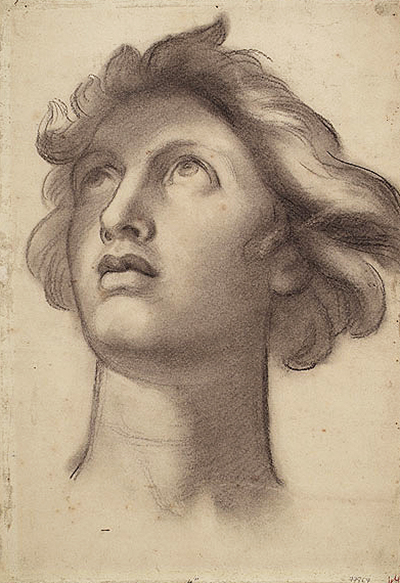Frederic Leighton is best remembered for his skills as a painter, but actually held diverse skills across a number of different mediums, including drawing and sculpture. This was an artist who carefully planned all of his larger projects and would normally do this through detailed study drawings.
The drawings produced by this artist predominantly make use of inspiration from Ancient Greece and Rome. Figures are portrayed with flowing, elegant clothing and sometimes pose with other objects from this period, including vases. During Leighton's time there was still a belief that these ancient periods had produced the most artistically impressive work and much of the education encountered by students was also heavily biased to classical art and literature. Many would study original artworks from these periods in person, making study sketches and copies of sculptures. We do know that Leighton was also a skilled sculptor, and so some of his drawings would have been in preparation for some of those pieces too.
Whilst following the styles of classicism, many of Leighton's portrait drawings would soften features, producing his own style which fell just aside from traditional sculpture. He did not feel it necessary to follow myth or historical narrative in a perfect way, but rather use it as a firm base from which he would append his own ideas and ultimately create his own unique style. Those browsing his drawings only briefly may not understand this, whilst his most fervent supporters would spend more time looking through the hundreds of sketches that have been collated by the significant Leighton Drawings Project. It remains one of the most important interventions by the Heritage Lottery Fund which continues to support various domestic campaigns related to the arts and historical culture of the UK.
The photograph included here is from an artwork titled 'Study for 'St. George Overcoming the Dragon': Head of St. George' which was a early drawing in preparation for a later painting. As with most of his study drawings, it focuses on a single element from the more complex composition used for his work in oils. He would target several key figures from his overall design and practice them each in detail separately, before later putting them all together in the final piece. Many artist's work as draughtsmen has traditionally been neglected for a number of reasons, but a lot of effort has recently been put into identifying and documenting all of Leighton's available drawings.
The completed drawing found here is dated at around 1852 and was completed in black chalk on white paper. It can be found at the Leighton House Museum, a significant institution who were involved in the deep research into his work. The Leighton Drawings Project received a grant from the UK Heritage Lottery Fund and this enabled it to document around 700 drawings from his career - all are available for viewing on their website. Not only does it examine their own collection, but it also draws in other drawings found in private collections all around the world. Leighton's reputation is certainly wider than just the UK, with many still appreciating Victorian art in the US, Australia and Asia.
Frederic Leighton is just one of a number of exceptional draughtsman to have come from the UK over the past few centuries. There is even a Royal Drawing School, as well as classes of a high standard from some other artistic institutions. In terms of similarity to Leighton in terms of style and content, one would be worth studing the drawings of John William Waterhouse, who produced a number of exquisite female portraits during his career. Members of the Pre-Raphaelites, of which he was on the fringes, were also highly skilled in this area. Looking further abroad, the finest European draughtsman would surely have to include the likes of Michelangelo, Leonardo da Vinci and also Albrecht Durer.




